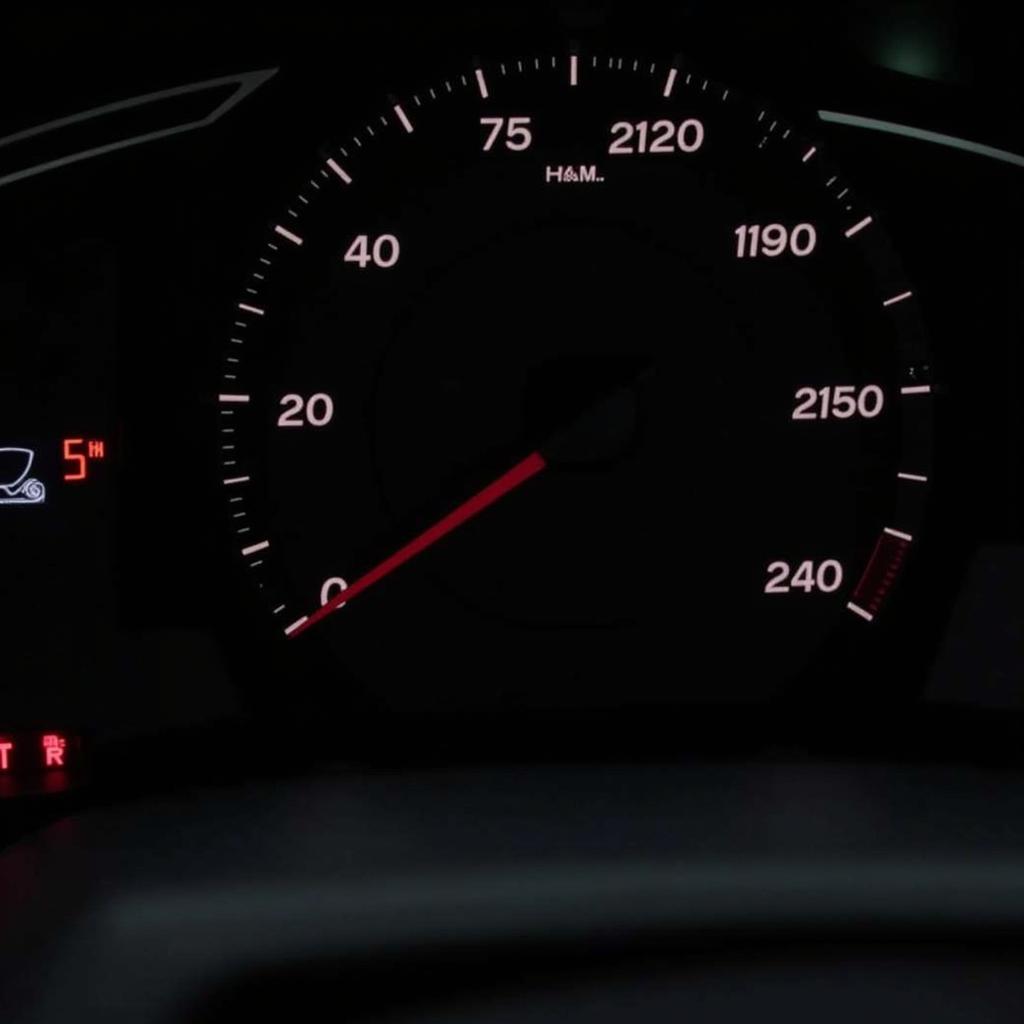A “hydraulic brake pressure warning state circuit 1” message flashing on your dashboard can be a nerve-wracking experience. This warning generally indicates a problem with your vehicle’s critical braking system, demanding immediate attention. Don’t panic! This article explains what this warning means, its common causes, and how you can address them.
Deciphering the Warning: What does “State Circuit 1” Mean?
Modern vehicles utilize sophisticated electronic systems to monitor and control various functions, including brakes. The “hydraulic brake pressure warning” alerts you to an issue within this system, while “state circuit 1” pinpoints the location of the problem – a specific electrical circuit responsible for relaying pressure information from a part of your braking system.
Common Causes of a “Hydraulic Brake Pressure Warning State Circuit 1”
Several culprits can trigger this warning light, ranging from simple issues to more complex problems:
- Low Brake Fluid: The most common culprit is low brake fluid, often due to worn brake pads or a leak in the system.
- Faulty Brake Pressure Sensor: Your car uses sensors to monitor brake fluid pressure. A malfunctioning sensor can send inaccurate readings, triggering the warning light.
- Wiring Issues: Damaged or corroded wiring within “state circuit 1” can disrupt the signal transmission between the brake pressure sensor and the vehicle’s computer.
- ABS Module Problems: In some cases, a faulty Anti-lock Braking System (ABS) module, responsible for modulating brake pressure during hard braking, might trigger the warning.
- Master Cylinder Failure: While less common, a failing master cylinder, responsible for distributing brake fluid pressure, can also be the root of the problem.
Troubleshooting the Warning: What to Do
If you encounter this warning, it’s crucial to address it promptly. Here’s a step-by-step guide:
- Check Your Brake Fluid Level: This is the easiest and most important step. Locate your brake fluid reservoir (refer to your owner’s manual) and check the fluid level. If it’s low, add the appropriate brake fluid (DOT 3 or DOT 4, as recommended by your manufacturer) to the “MAX” line.
- Inspect for Leaks: If the fluid level is low, carefully examine the area around the master cylinder, brake lines, and calipers for any signs of leaks. Brake fluid is typically clear to light yellow but may darken with age. Look for wet spots, drips, or puddles.
- Visual Inspection of Wiring: If the brake fluid level is sufficient and you don’t see any leaks, visually inspect the wiring harness connected to your brake pressure sensor for any visible damage, loose connections, or corrosion.
Seeking Professional Help: When to Consult a Mechanic
If the issue persists after these initial checks, it’s best to consult a qualified mechanic specializing in automotive electrical systems and brake repair. They possess the necessary diagnostic tools and expertise to:
- Accurately diagnose the problem: Using advanced diagnostic scanners, they can read and interpret the error codes stored in your vehicle’s computer, pinpointing the exact fault within “state circuit 1.”
- Test and replace faulty components: Whether it’s a malfunctioning brake pressure sensor, damaged wiring, or a failing ABS module, a qualified mechanic can effectively replace the faulty part.
- Ensure proper repair and reset: After replacing any component, they will ensure the new part is correctly installed, the system is free of leaks, and the warning light is reset.
Ignoring the Warning: The Risks
Ignoring a “hydraulic brake pressure warning state circuit 1” can have serious consequences:
- Compromised Braking Performance: The warning signals a potential issue with your braking system. Ignoring it could lead to reduced braking efficiency, longer stopping distances, or even complete brake failure.
- Expensive Repairs: What might start as a minor issue, like a faulty sensor, can escalate into a costly repair if neglected, potentially requiring complete brake system overhauls.
- Safety Hazard: Driving with a compromised braking system puts you, your passengers, and other road users at significant risk.
Conclusion
A “hydraulic brake pressure warning state circuit 1” should never be ignored. By understanding its meaning, potential causes, and taking prompt action, you can ensure your safety and prevent further damage to your vehicle. Remember, when in doubt, consult a qualified mechanic for a thorough diagnosis and repair.


